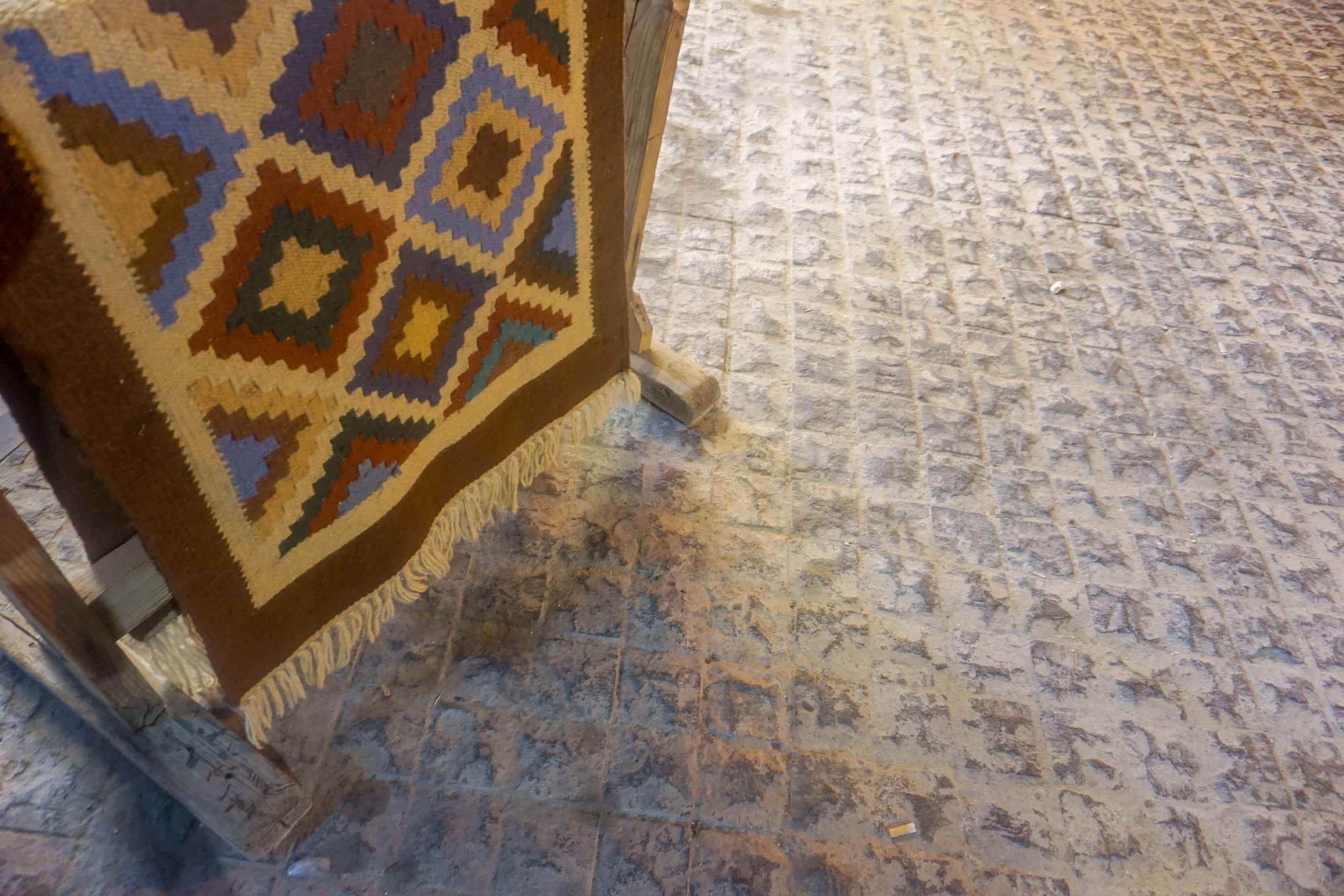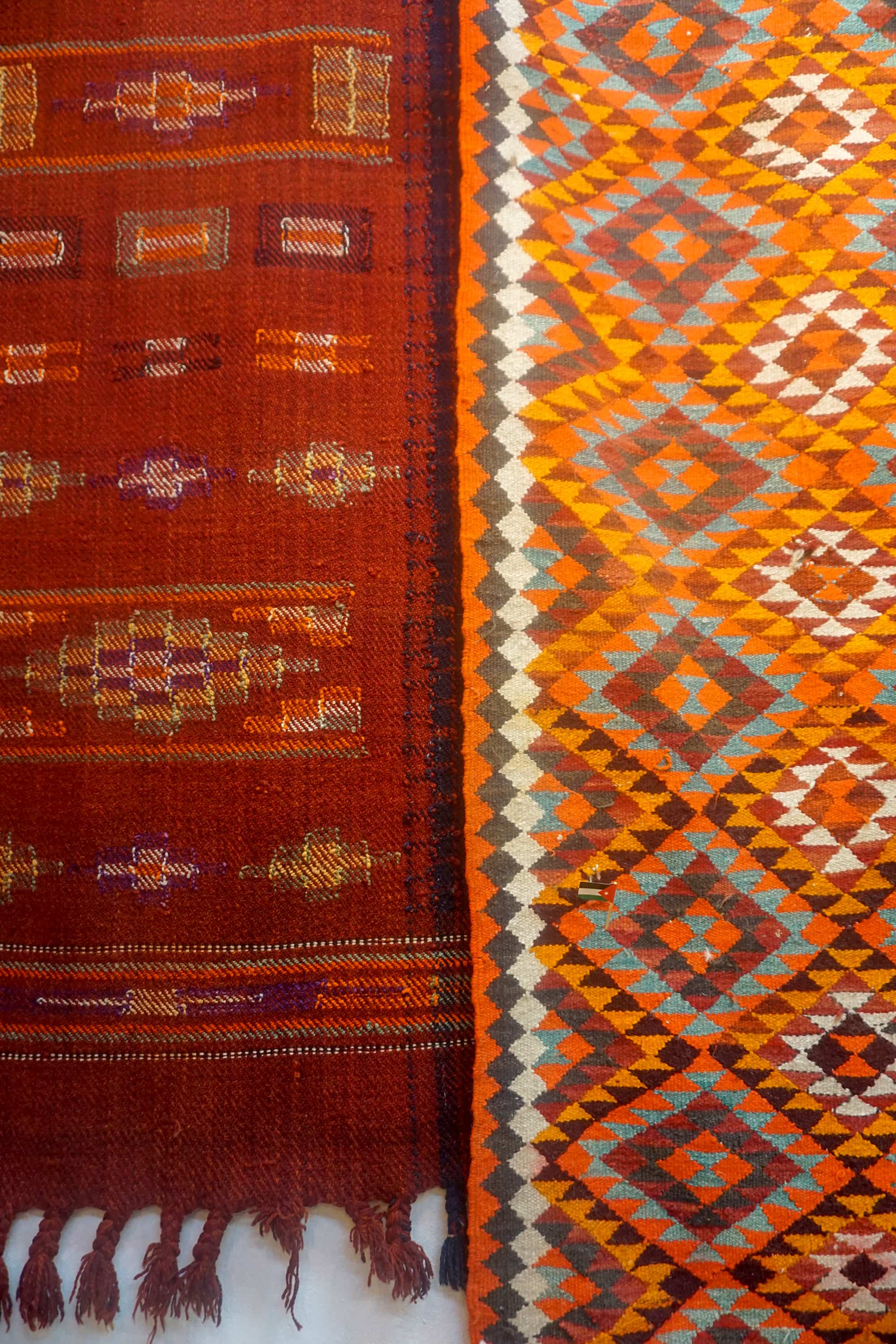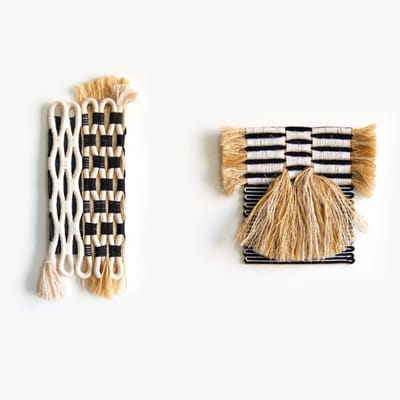Experimentation — and the use of local materials like stone, clay and wool — were key threads running through the third edition of Amman Design Week, held on October 4–12, 2019. Presented at 55 exhibition spaces spread throughout the city, this year’s program, 'Possibilities', brought together designers from the MENA region for talks, workshops, networking, and pop-ups.
Contributors Laura Lin and Johanna Rogalla found a number of unique, textile-related works — as well as products reflecting ADW's commitment to the UNDP’s Sustainable Development Goals. They also noted a feeling of creative optimism at the event, striking given the current political instability of Jordan's neighbors.

Amman Design Week: Hangar Exhibition
Located downtown in a former electricity plant opposite the Cultural King Hussein Centre, the Hangar and Ras Al Ain Gallery functioned as a centerpiece and meeting spot during Amman Design Week. Textile structures were used as architectural elements, exploring social themes via their woven and knitted surfaces.



Prominently placed within the exhibition hall, the modular architectural object "Meeting Points" by architect Abeer Seikaly attracted attention from the scaled-up dimension of its knitted surface. The making process of the tapestry created an interface between designers and local communities and were constructed based on the weaving knowledge of Bedouin women. Abeer’s video work "Matters of Time" (2019) portrays the customs of Bedouin women making of tent components for Beit-al-sha’ar ("house of hair"), juxtaposing it against the increasing number of cement houses that are displacing woven habitations in the Jordan's southern Wadi Rum area. An interconnection of wood sticks, steel elements, hand-knitted goat hair and jute yarn formed a geometric tapestry that referenced the potential of generationally-passed crafts for contemporary design processes.
Amina Agueznay (Morocco)
With a focus on boosting visual elements of women-made crafts, Amina Agueznay worked with 23 women artisans of the Entraide Nationale of Bouznika in Morocco to collage a handmade textile curtain from unusual materials such as recycled fishnets, glass beads, metal or seashells — skillfully weaving them into a fragile surface.






Ishraq Zraikat (Jordan)
“Circular loom” textile designer, architect, and fashion journalist Ishraq Zraikat used her installation to refer to the heritage of Bedouin homes fully made of kelims. After some years of living and working in New York City, Ishraq recently returned to Jordan to learn about traditional techniques from women in her family. In the process, she's rethinking the manufacturing process of weaves made with a ground loom and, using this textile shelter, she's simulated a circular procedure. During Amman Design Week, a woman weaver brought the conceptual work to life by weaving inside a loom that simultaneously functioned as an architectural construction. By tying both ends of the warp threads together, a sustainable aspect appears as the manufacturing waste is minimized. Conscious handling of wool material is one of the main aspects of Ishraq’s research, as is her interest in reviving local fiber production.




“I got very much inspired when accompanying women in a village for the first time to set up a ground loom – simply using sticks and things that we could find around the house.” Ishraq Zraikat
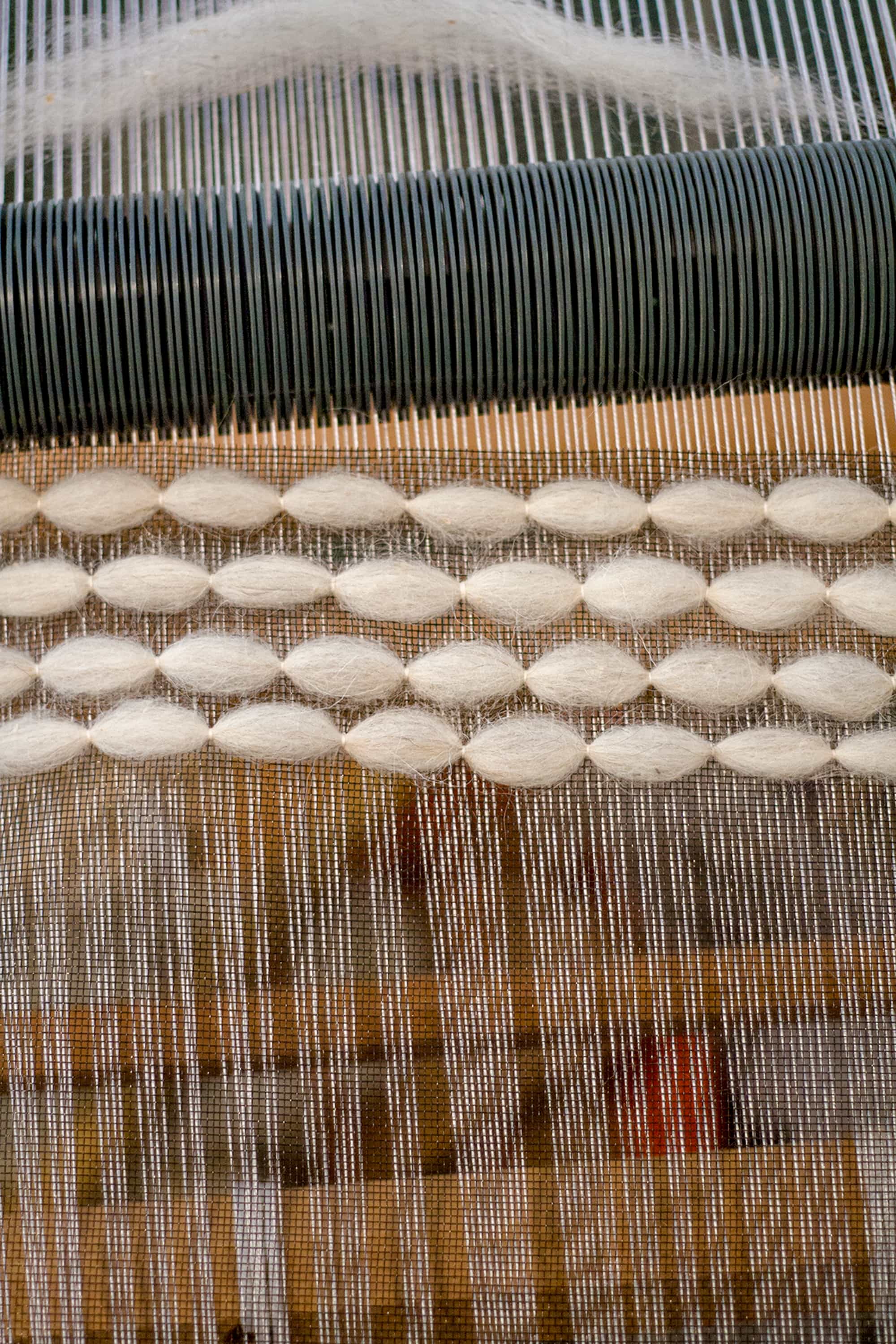







Hala Kaiksow (Bahrain)
Mostly known for fashion design focusing on sustainability, Hala Kaiksow has a strong interest in handcrafts — especially woven fabrics. Her work is influenced by the language of her Arab heritage with a modern interpretation. The installation "A Room of One’s Own” combines various textile materials woven into oak sticks, creating a space where the visitor is invited to enter and to experience contrasting tactile aspects of wood and threads. Through upscaling weavings in her work — both in performative installations and those partly integrated in her fashion designs—Kaiksow makes the process of weaving visible, enriching our understanding of crafted materials.
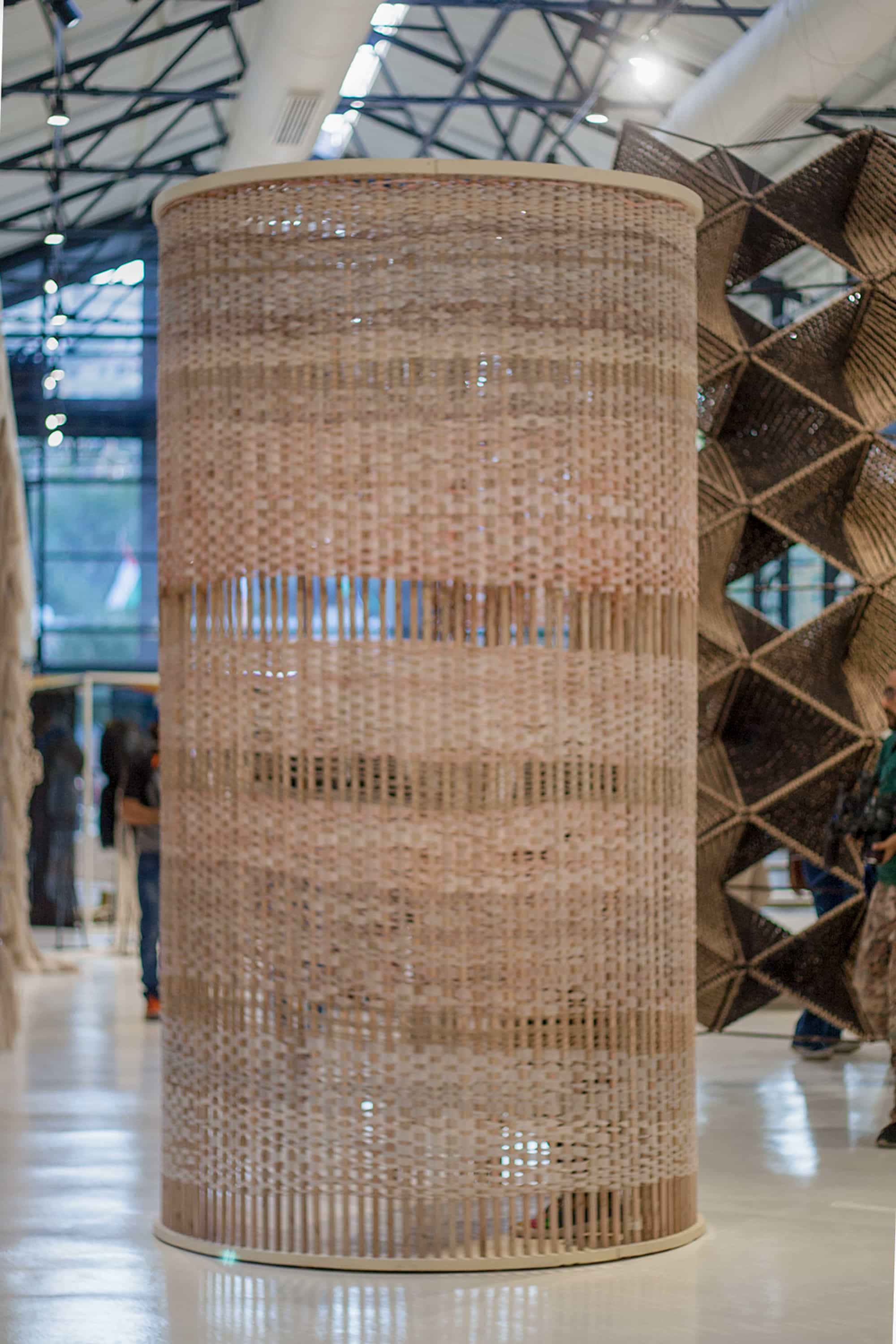



Esna Su (UK)
The London-based jewelry artist Esna Su interprets "hasir” carpet weaving to create wearable objects using an interior textile technique. Working with various natural materials and craft techniques, Esna aims to form a narrative within social and political contexts. The dense interwoven structure of her objects represent both the need of refugees to obtain a protective shelter and their isolation as displaced persons.



Ramses Wissa Wassef Art Centre (Egypt)
Some of the more elaborate textile works at Amman Design Week's Hangar Exhibition are represented by Egypt's Ramses Wissa Wassef Art Centre. The two tapestries, "Fields and Country Side" (2017) by Nagla Farouk and "Village on the Nile" (2018) by Ali Seliem, are handwoven in vivid colors showing rural sceneries surrounded by floral motifs. The Art Centre, named after its founder and architect Ramses Wissa Wassef, is known for weaving and art education training that focuses on students with a village background—an unconventional concept. The materials used for the tapestry weaving are local cotton and sheep's wool and all colors are made with natural dyes reintroduced to this area by the Centre itself. Twice a year, all of the weavers from the Centre gather in the garden for a "festival of colors" when yarns are dyed. Each weaver is encouraged to establish their own timeless, visual language of weaving and to promote an individual artisan narrative.




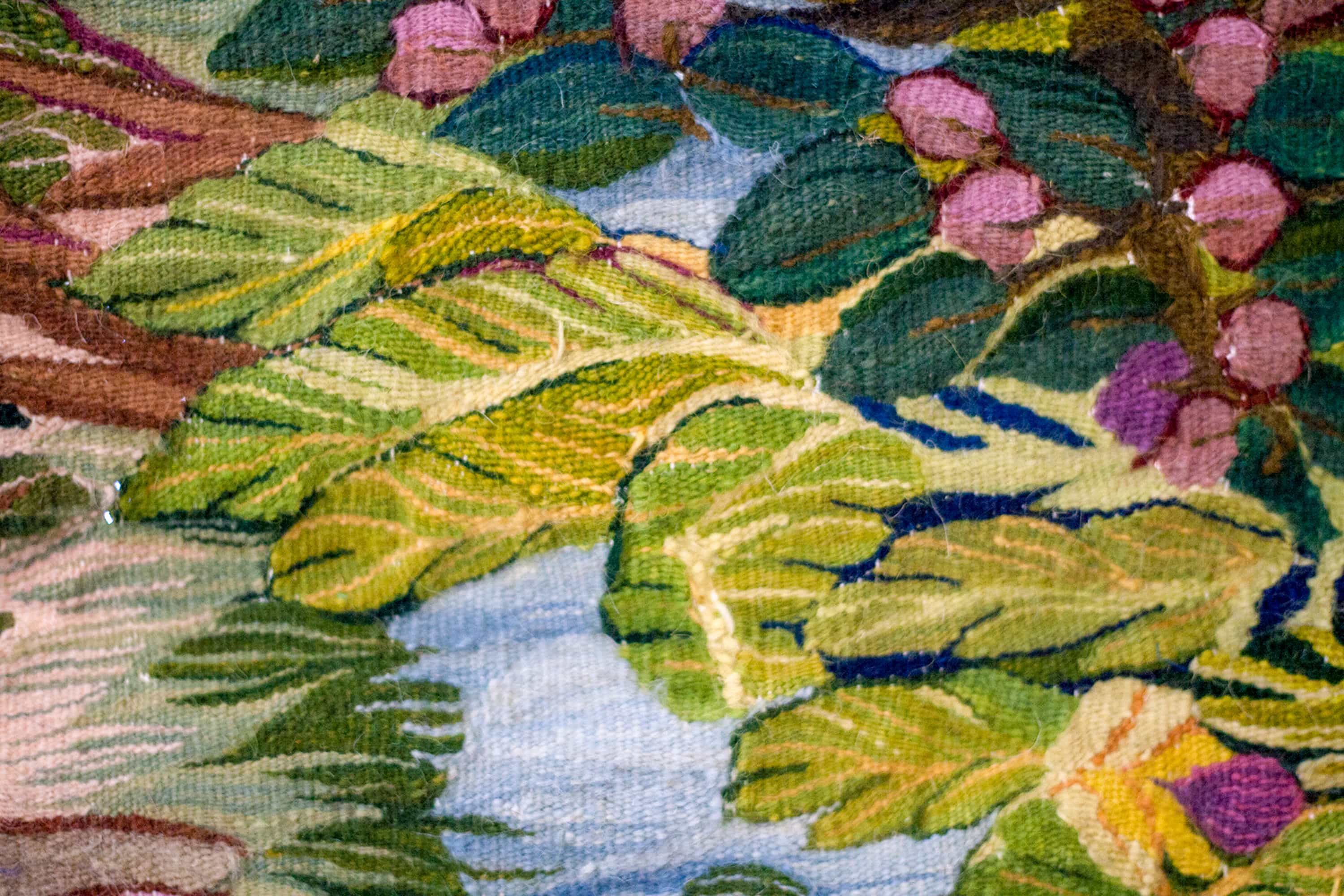

Faissal El-Malak (UAE)
Dubai-based fashion designer Faissal El-Malak collaborates with Beirut-based design studio Kawakeb, textile designer Alexandra Saddi, and ceramic artist Xenia Al Malki in this installation. The collective experiments with the dimension of Palestinian embroidery by transferring it into a spatial collage of textile prints, jacquard weaves, embroidery, and ceramic objects.






Craft District
A spacious installation of hanging indigo-dyed banners by Safi Crafts welcomed the visitor at this year’s Crafts District. Located at Ghor Al Safi in a valley close to the Dead Sea, Safi Crafts is a UNESCO-supported women's cooperative that aims to revitalize and to pass on the use of natural dyes and the cultivation of indigo plants. Their method: Manufacturing home textiles and fashion collections with a focus on sustainable dying techniques.



Material Innovation (Jordan / Germany)
Situated in one of the district’s inner sandstone houses, "Material Innovation" explored the possibilities of combining traditional textile techniques with sustainable materials, bioplastics, waste, and biodegradable substances. A workshop conducted in the context of the "Textile Innovation Lab I" was initiated by Amman Design Week and the Goethe Institute Jordan. Supervised by German textile designer Anette Fauvel, the exhibition aimed to find new processes for alternative textiles. Research and experiments informed the work of four designers and Jordanian design studio Twelve Degrees, who displayed a wide range of innovative material compositions.






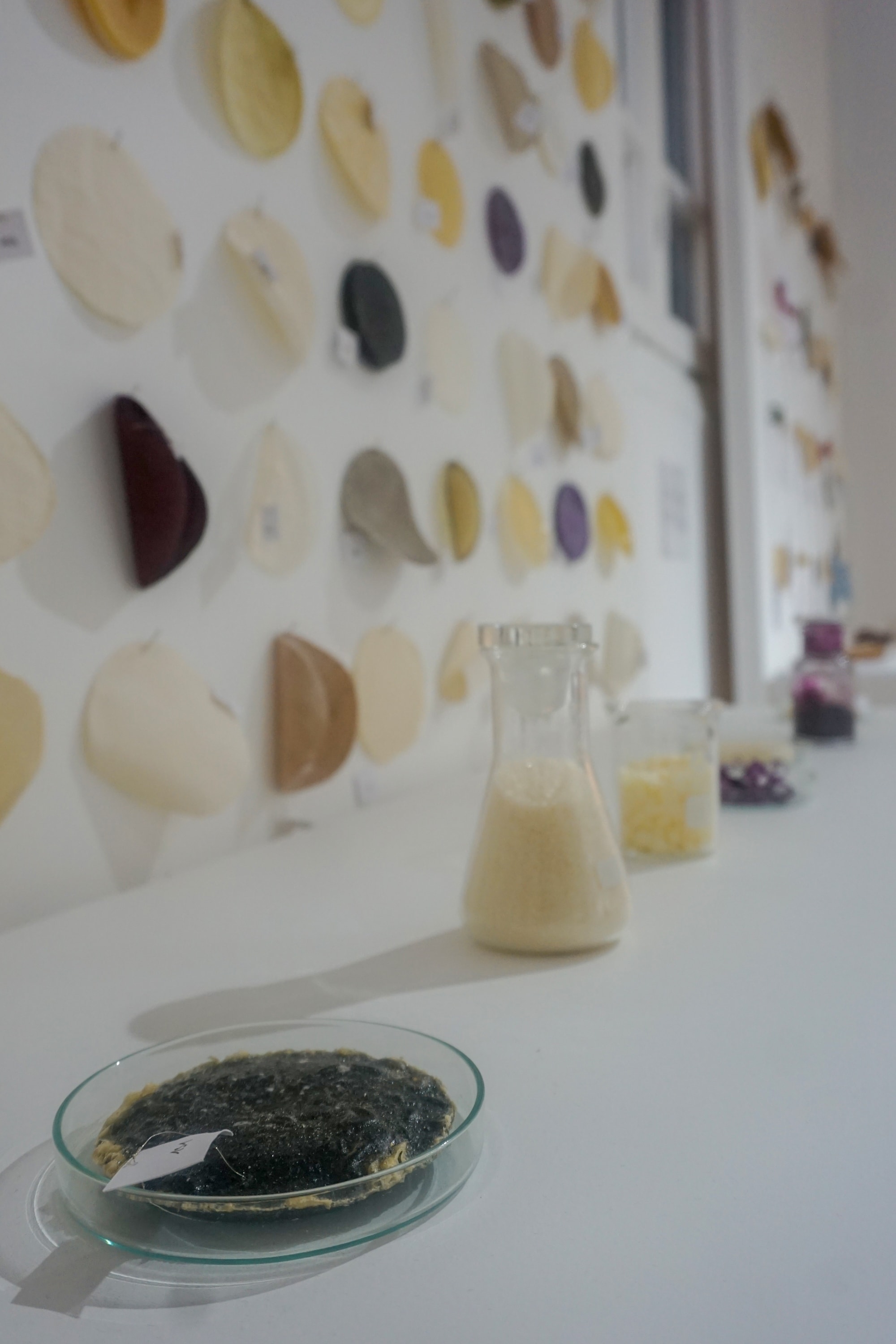


Milia Maroun (Lebanon / UK)
For this Amman Design Week, designer Milia Maroun's explores regional writing systems as a means of looking at cultural heritage and modern-day identity politics in an exhibition titled Jordan Script Routes. [Editor's Note: Maroun's textile work was also featured in our report from London's Collect 2019]



Independent spaces
Tania George (Jordan)
A funky—and tasteful—combination of pinks and pastels welcome customers, friends and passers-by who enter Tania George’s shop (located on Jabal Al Weibdeh, one of the twenty hills of Amman and a cultural hotspot). A handwritten sign hangs above the door, meant as a homage to the time when it was customary for calligraphists to create distinctive labels for products or shops. George’s fashion collections are similarly inspired by the past and the tradition of her home country Jordan, but without referring to traditional ornaments or patterns. Instead, playful illustrated motifs of her childhood are used to tell stories of identity.
Visitors who have been to Jordan before may recognize the plastic bags filled with pink cotton candy hanging from the shop’s ceiling from vendors selling sweets on the streets of Amman. George uses cotton candy to illustrate the beauty of Amman’s customs and nostalgic moments she likes to tell stories about. Beside sweet ornaments, you can find embroideries — old-style milk cartons, ghee cans, or toy cars — on pastel shirts, pants, and skirts manufactured by locals. In her designs, nostalgia meets the present moment in hopes that, by reincorporating calligraphy or embroidery, into her collections. she might raise awareness for these vanishing crafts.
“The beautiful mess and chaos of Amman moves and inspires me.” Tania George


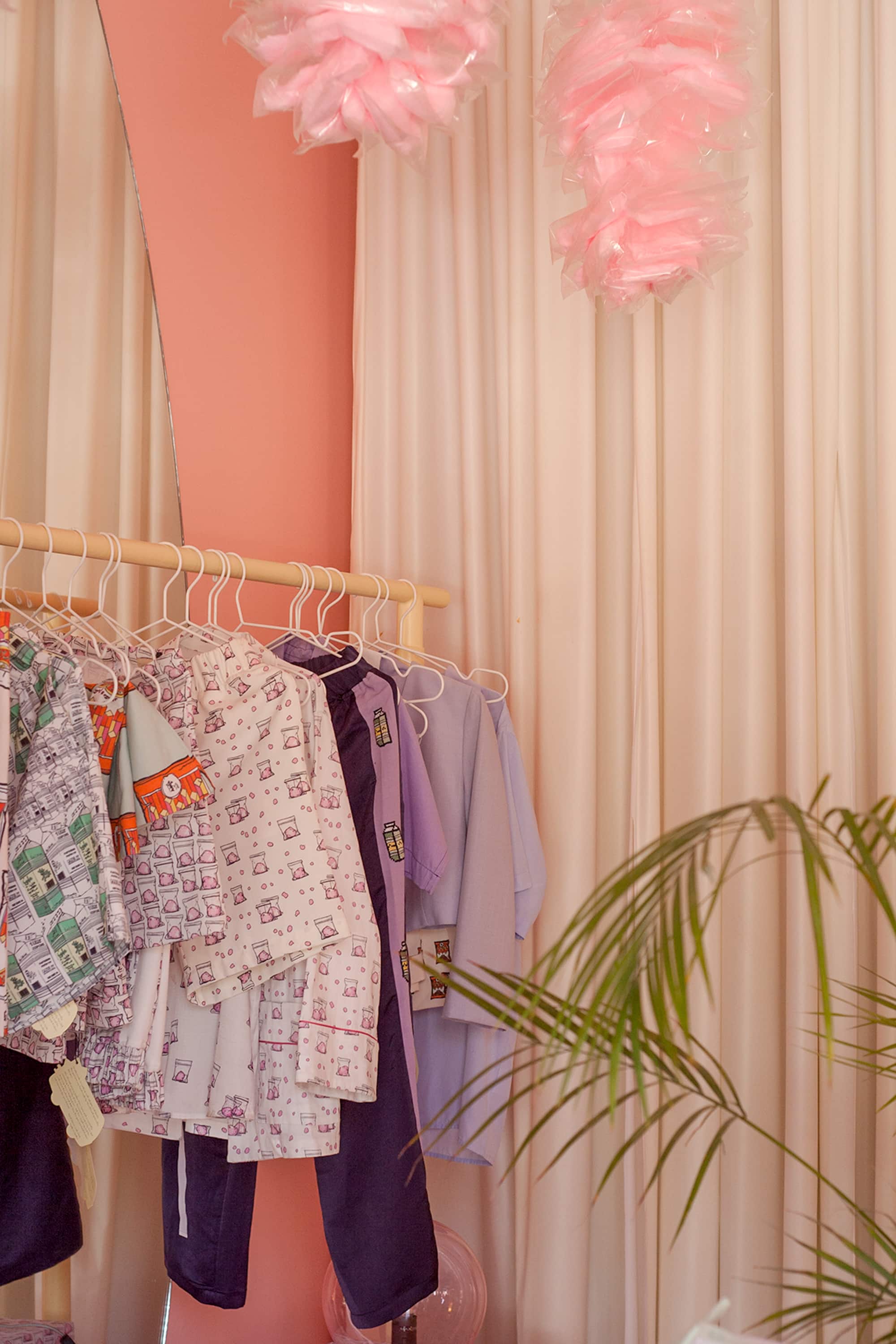



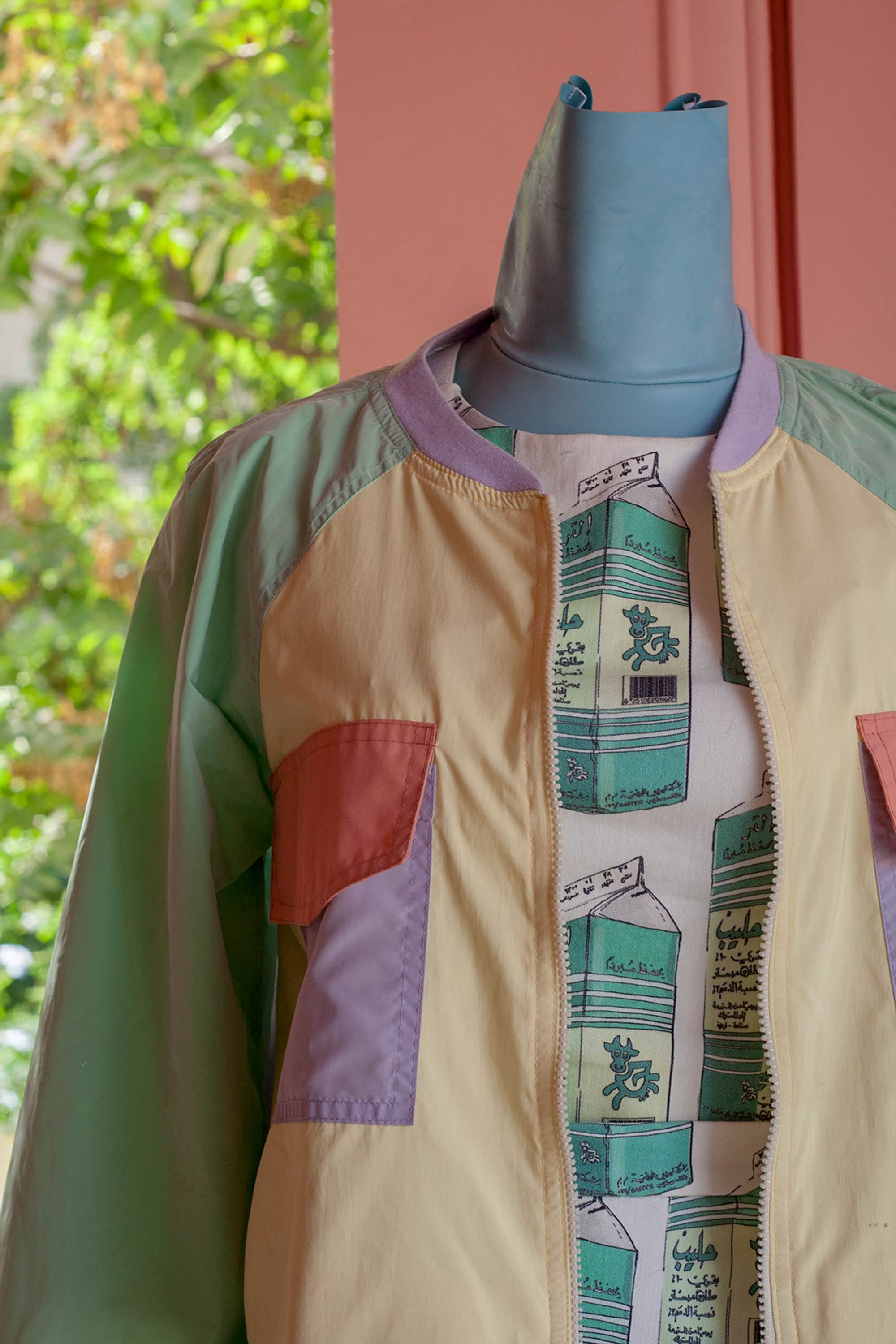


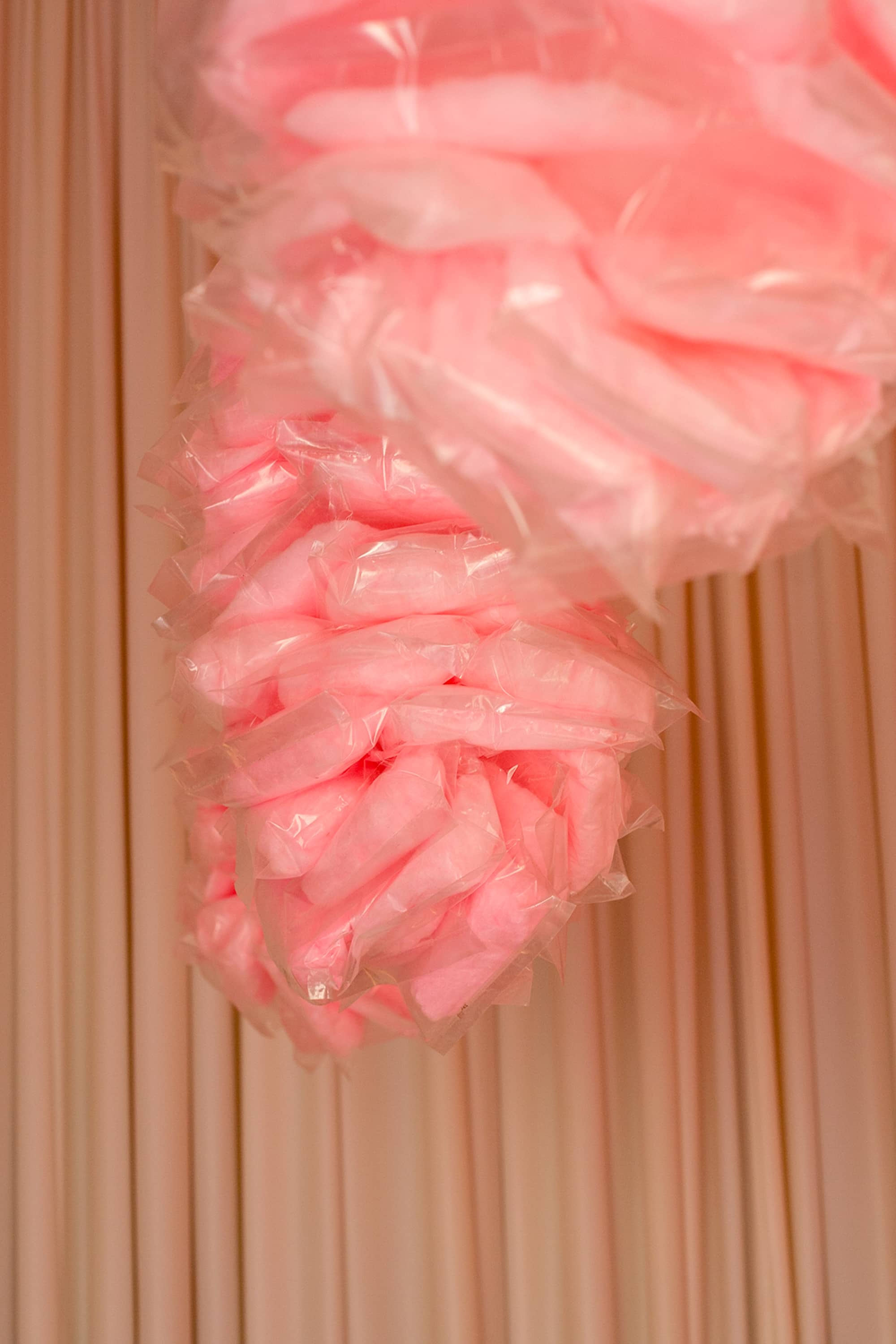
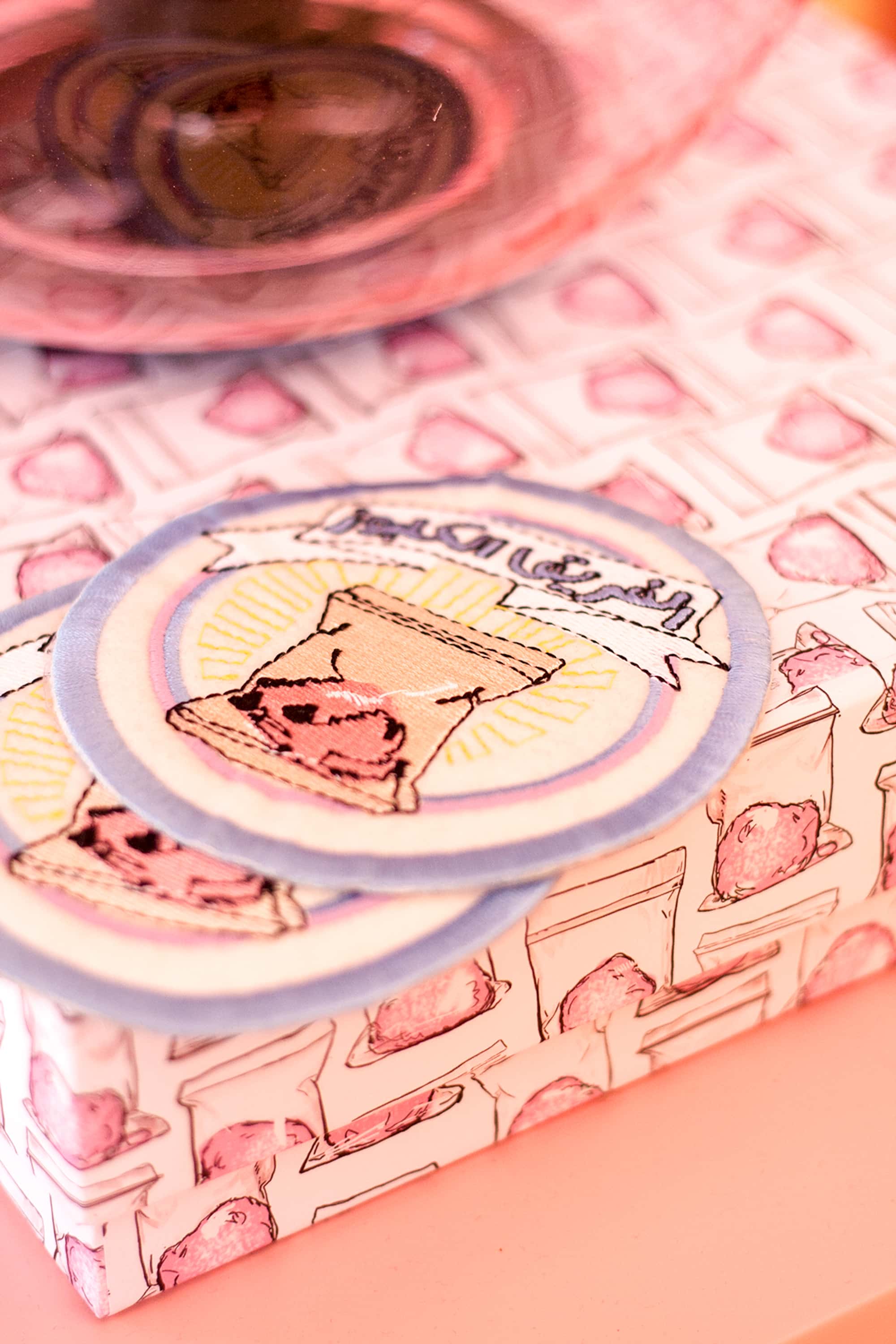

TIRAZ Centre
The TIRAZ: Widad Kawar—home for Arab dress is a museum dedicated to traditional dresses, jewelry, and everyday household items from the Levantine area (with the main focus on Jordan and neighboring regions such as Palestine, Syria and Iraq). In collaboration with a collective of six German designers and artists, the TIRAZ Centre presented "Contemporary Heritage". This temporary exhibition brought together modern textile, jewelry designs, and ceramic art pieces in an interdisciplinary context with items of the TIRAZ collection. The designers offered various textile and jewelry making workshop for visitors who, surrounded by original samples of the largest collection of this kind, might hopefully gain a more holistic understanding.







Shops and Permanent Spaces
Galleries, museums, design studios, concept stores, and many more spaces around the city opened their doors to participate with their own curated exhibitions and programs. Many of these exhibits could be explored by attending one of the walking tours organized by Amman Design Week that connected the events with the city's structure.

